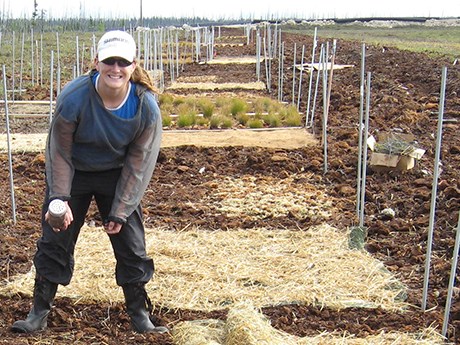A Sudbury-based scientist and his team are conducting research to develop protocols for the restoration of mined lands that could be applicable across the Hudson Bay Lowlands in Northern Ontario.
Daniel Campbell, a lead scientist specializing in wetland and terrestrial ecology working for MIRARCO Mining Innovation, gave a presentation about planned reclamation projects for the De Beers Victor Mine at the fifth annual Ontario Mine Reclamation Symposium, hosted by the Canadian Land Reclamation Association and the Ontario Mining Association, June 20 and 21, at Thunder Bay’s Lakehead University.
The Victor Mine is located in the far north of Northern Ontario about 90 kilometres west of Attawapiskat, a First Nation community. The mine, operating since 2008, is Ontario’s first diamond operation and is expected to have a mine life of between 12 and 15 years. MIRARCO, a mining innovation research group based at Laurentian University in Sudbury, conducts applied research for the mining industry.
“De Beers Canada realized that they had to begin to develop reclamation protocols early on to be able to have solid protocols by the time they are at mine closure,” said Campbell. “They also want to begin progressive reclamation as some of the waste piles reach maximum capacity.”
The scarcity of research on rehabilitation of upland and wetland habitats in subarctic and high boreal regions has made it challenging to develop suitable protocols for severely disturbed environments, especially in the Hudson Bay Lowlands.
Campbell and his team have focused on four major objectives for the Victor Mine.
The first objective is to test whether peatland rehabilitation techniques developed for mined peatlands in northern temperate and southern boreal peatlands are suitable in a subarctic context and to modify them as required.
The second objective is to identify suitable plants for the rehabilitation of newly created upland areas through a functional inventory of local native plants. Researchers characterized key traits for 67 species while studying lifespan, canopy height, leaf size and thickness, seed shape and mass and other characteristics.
“These traits can help classify different species needed for reclamation,” explained Campbell. “You end up with a series of species that have similar types of characteristics. We want species that establish well and that will grow quickly.”
The third goal is to characterize existing upland areas as rehabilitation targets for newly created upland deposits.
The fourth objective is to develop soil amendment protocols for newly created upland areas to make them adequately fertile and erosion resistant to support local vegetation.
“We looked at how to make a soil that will enter into the regional framework,” said Campbell.
Campbell said this research benefits De Beers by establishing protocols for the successful rehabilitation of disturbed upland and peatland habitats associated with the mining activities at Victor Mine. The research will not only be applicable to the Victor Mine, but will also be an invaluable knowledge base for restoring severely disturbed terrestrial environments in Canada's north, in particular those associated with other mining operations.
“It will advance the field of ecological rehabilitation globally,” said Campbell, who is currently preparing a proposal for the next phase of the project.
All reclamation work will be completed by DeBeers Canada and its contractors following mine closure and as tailings facilities and waste deposits reach their final volumes.
“The goal is to try to rebuild diverse vegetation communities on disturbed peatlands and new uplands made of mining wastes,” explained Campbell. “We are aiming for native plant communities, and not just a vegetation cover with non-native species. This is a big challenge.”
At most reclamation sites across Northern Ontario, a seed mix with mostly non-native species is used to reclaim sites. Due to agreements with the Attawapiskat First Nation, only native species are allowed for the Victor Mine site.
“To support native vegetation, we must build a suitably fertile soil from the mining wastes, find suitable species, then ensure that they can colonize and maintain themselves on these sites. This is quite a challenge, especially given the harsh subarctic climate,” said Campbell. “If we are successful, I hope that some of this research will be applicable to disturbed sites elsewhere in subarctic Canada.”
The Victor Mine reclamation project is in its early stages, and while some progress has been made, more testing will be needed. The research team has identified key reference conditions for reclamation such as determining suitable fertile soils from mining wastes, identifying probable candidate plants for restoration, and testing peatland restoration protocols.
“These reference conditions allow us to aim for a target and build towards a target over time,” said Campbell.
The research team plans to begin testing early results in the field next summer.



